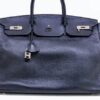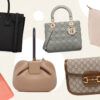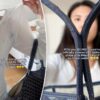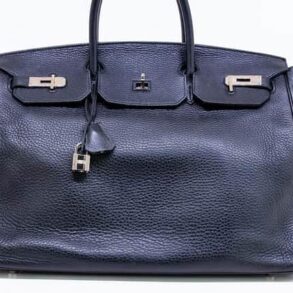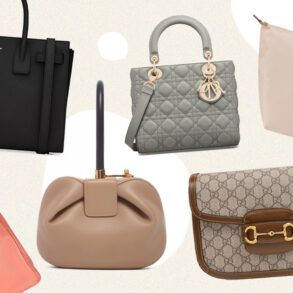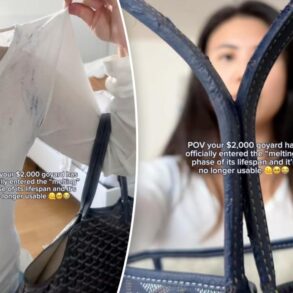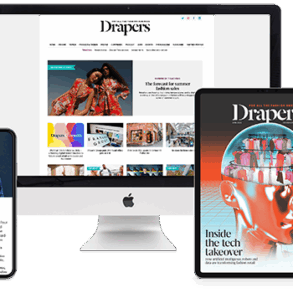Alex Leung brings out a small box. It’s covered in the rich orange of Hermès, one of the world’s most expensive luxury brands, and sits on the counter, elaborately embossed logo on the outside. Inside is a handbag made of alligator skin and tanned green. It’s secondhand but comes with a $85,000 price tag. You could fit a phone in it and not much more.
Casually he moves a $20,000 vintage Chanel handbag out of the way, to the other side of his desk. It almost seems a steal sitting in such proximity to the smaller, rarer Hermès that would cost the price of a deposit for an apartment.
“At the moment, the trend is the smaller, the more expensive,” Leung says.
His store is for the wealthy elite who don’t want to be on the wait list for a Birkin or who are unhappy with the one offered and want it in a different colour.
It’s also for the “want-to-be aspirational middle class” looking to get a bargain – a high-end brand at a consignment price. The store, The Purse Affair, is filled wall to wall with secondhand designer bags – more choice than you would ever get shopping inside Gucci or Fendi or Dior.

Leung and his wife have built a small empire – becoming national leaders in reselling pre-loved, pre-hated or pre-ambivalent luxury handbags.
“We’re that gap in the market, we can get the exact bag, get clients what they want … immediately,” he says.
And increasing numbers of clients want their goods.
There are a number of Australians – 10% of the population in fact – who have been sheltered from the winds of high inflation, the cost-of-living crisis, the housing crisis, the low jobseeker crisis, the everything going up except wages crisis. Last week the Productivity Commission released a report into inequality in Australia, and it showed that during the pandemic their disposable income shot up.
And the divide is stark. In April renters increased their spending by 1.3%, while the nation’s homeowners with no mortgage splashed the cash at 6.3%, a report from Commonwealth Bank recently revealed.
“You can see some pretty significant differences there,” CBA chief economist, Stephen Halmarick, says.
“We can see that the weakest spending is people in the age bracket 25 to 29, who you would imagine are probably first-time renters.
“You have to go all the way up to people aged 60 and above to see spending rising by more than the rate of inflation.”
Those insulated from economic turmoil, those who have the cash, are splashing it.
Some are spending money on gyms. Last May, property developer Tim Gurner, who is worth $989m according to the AFR, and rose to public prominence with his infamous comments that millennials should stop buying avocado toast, launched a wellness club in Collingwood. Membership at Saint Haven starts at $130 a week and hits $1,000 for full access of the gym, day spa and restaurant. There is now a 15,000-strong waitlist for those who missed out and the club is launching two new venues in ritzy Melbourne suburbs Toorak and South Yarra.
“[In Toorak] We wanted to create the Qantas Chairmans Club equivalent of health and wellness, where members are treated to the utmost impeccable level of personalised service that you can’t get anywhere else,” a spokesperson for Saint Haven said.
The art market is also buoyant – with total sales at auction houses hitting $140m by the time the last gavel came down in 2023. Partner and managing director of Michael Reid Galleries, Toby Meagher, says while Covid-lockdown customers have dropped off, the premier price range is booming.
Their next show, with contemporary Indigenous painter Regina Pilawuk Wilson, opens in a week and has already sold out. The works range from $15,000 to $40,000.
“There’s obviously a real depth of collectors happy to spend at those levels,” Reid says.
“We’re not seeing a slowdown at all in that premier price range.”
In boutiques, at the high-end stores on Melbourne’s Collins St and Sydney’s Castlereagh St, the story is similar.
Last year more than $1bn was spent on luxury fashion.
In 2023 the Australian arm of Hermès, which operates just six stores across the country, made $477.13m – a bump of 23%. That’s a $90m jump in a single year.
Chanel recorded sales of $598.5m, up 4.8%.
A Bain & Co report revealed luxury sales were up 6% in Australia for the year, following a global trend of 8% – or $2.5tn.
‘$8,000 to $16,000 in a few years’
As the profits of fashion houses go up so do the prices of their bags.
“Chanel and Hermès, all luxury houses, they increase prices two, sometimes three times a year,“ Leung says. “And we’re not talking small amounts but 20% or 30% at a time.”
He says one of Chanel’s small classic flaps has gone up from $8,000 to $16,000 in a a few years. It’s part of creating the exclusive allure.
after newsletter promotion
Bags can be a very good investment. They hold their value. The right one will appreciate as soon as you walk out of the store.
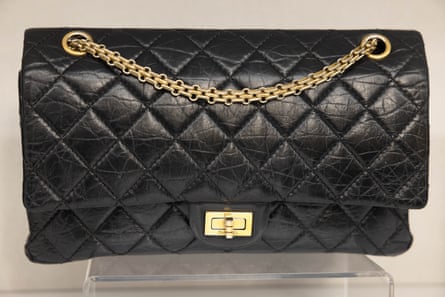



A former staff member at Chanel in Sydney, who spoke to Guardian Australia under the condition of anonymity, says their clients spend hundreds and thousands each year and often come in every two to three weeks. “Top spenders might get to see collections early and reserve pieces, but this is for a very small number of clients.”
‘Playing the game’
Social media is fuelling the luxury handbag market.
No one needs to be told the bags themselves – the material and labour – do not cost their price tag. In the world of TikToker Tanner Leatherstein, whose real name is Volkan Yilmaz, these bags are sliced and diced in seconds to reveal their true quality.
One video starts with Yilmaz slashing a Louis Vuitton Go-14 Pico, worth $6,700; in another he dissects a Capucines MM – a casual $11,300. Prada is on the chopping block, so is Yves Saint Laurent. He then tells his 950,000 followers how much the bag likely costs to make.
“The price multipliers I see in the luxury brand space vary between 10x to 20x so far,” he says. “If a bag costs $250 in leather, hardware and assembly and labour, it is sold between $2,500 and $5,000.”
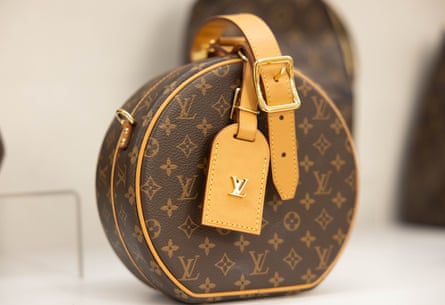



The bags with the deepest lore sell for the most. Grace Kelly was first photographed with her namesake bag to hide her pregnancy. To get a Birkin, prospective buyers have to spend an unknown amount at a Hermès store and build a relationship with a Hermès sales assistant – only then they might be put on the list – where they’ll wait sometimes years.
Stories fly around of people who have got them, or tried to. One woman’s husband spent an unknown amount only to bring it home for her and she didn’t like it; another husband bought so many things in a bid to reach the unknown amount that he bought something for a dog he didn’t own; another woman went to Paris, won the lottery for a “leather appointment” – an instore meeting with an assistant – and was only offered a size 28 when she had her heart set on a 25.
Online there are endless articles and videos offering tips to high flyers on how to get the bag. This level of exclusivity is what drives the sales, Leung says.
Some of their customers come in just to avoid this.
“There’s people that don’t want to play the game,” Leung says. “They don’t want to wait for the queue. And they’ll just come to a place like ours and just get the Birkin straight up.
‘Honestly, they’ve got the money’
The Purse Affair sits at the flat end of Collins Street but still exudes high society. The staff offer water when you arrive, the chandeliers cast soft white light across the shelves and flowers are placed next to Louis Vuitton trunks in the entryway.
Leung says a lot of high-end buyers use consignment stores to sell bags they bought two or three years ago – because the prices increase so quickly they can often break even or get most of the money back.
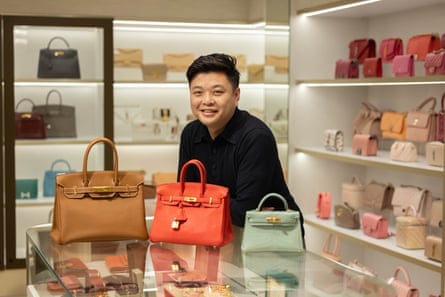



Collecting is different – many clients will upscale, selling their Gucci or Louis Vuitton to get a Chanel or their Chanel to get a Hermès. Leung says they know what their customers want, and they will often source the bags from overseas for them.
“Let’s go back to scarcity. Even if you are very rich, often it’s very hard to get the exact thing that you want.
“It’s easier just to go to the resale world or the personal shopper world, and companies like mine, so that you can straight away just get what you want.”
Leung says during Covid, like many high-end consignment stores, they recorded more customers. Instead of travelling, people with disposable incomes bought handbags. That wave has ebbed but the market catering to the top end of town is still thriving.
“It is resilient,” he says. “We can still hit up clients with a $50,000 offer and they’ll be able to make a decision in a split second. Because honestly, they’ve got the money.”
This post was originally published on this site be sure to check out more of their content.

